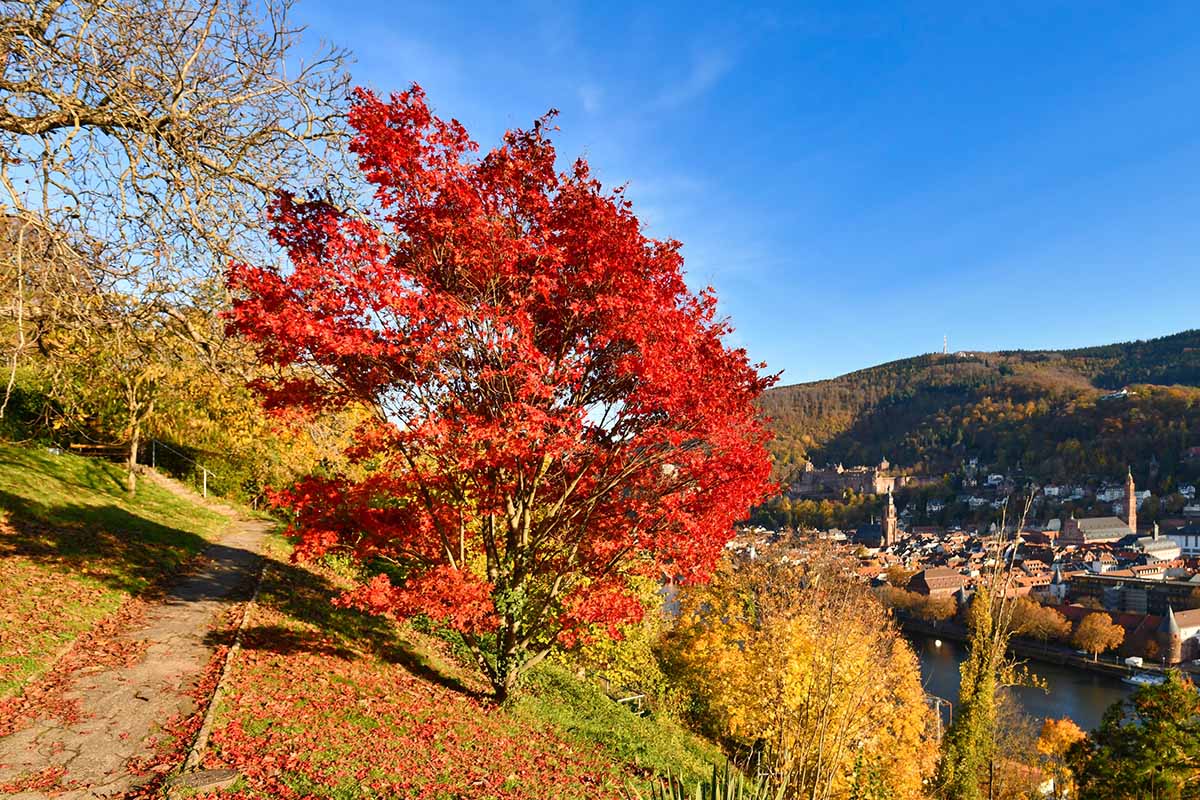
Red maple, scientifically known as Acer rubrum, is a captivating tree species that holds a special place in the hearts of nature enthusiasts and arborists alike. Its vibrant foliage, ranging from brilliant reds to rich oranges, adds a mesmerizing touch to landscapes during the fall season. Beyond its stunning appearance, the red maple boasts a fascinating array of characteristics and uses that make it a beloved and integral part of ecosystems and human activities. In this article, we will delve into 19 intriguing facts about the red maple, shedding light on its ecological significance, cultural relevance, and practical applications. From its role as a wildlife habitat to its contributions to syrup production, the red maple stands as a symbol of resilience and versatility in the natural world. Join us on a journey through the enchanting world of the red maple, where every fact unveils a new layer of wonder and admiration for this remarkable tree species.
Key Takeaways:
- The red maple is a resilient and beautiful tree that provides habitat for wildlife, syrup, and stunning fall foliage. It’s a symbol of nature’s wonders and the importance of environmental conservation.
- Red maples are adaptable, long-lived, and culturally significant. They play a crucial role in ecological restoration, climate resilience, and are a reminder of the interconnectedness of all living organisms in the ecosystem.
Red Maple: A Symbol of Strength and Beauty
The red maple, also known as Acer rubrum, is a resilient and enchanting tree species that holds a special place in the hearts of nature enthusiasts and environmentalists alike. Its vibrant foliage and remarkable adaptability make it an iconic symbol of strength and beauty in the world of flora.
The Red Maple's Resplendent Foliage
The red maple's leaves are a sight to behold, transitioning through a stunning array of colors throughout the year. From vibrant shades of green during the spring and summer to breathtaking hues of red and orange in the fall, the red maple's foliage paints a mesmerizing portrait of nature's ever-changing beauty.
A Versatile Habitat Provider
Red maples play a crucial role in providing habitat and sustenance for a diverse array of wildlife, including birds, squirrels, and various insects. Their dense foliage and abundant seeds offer a safe haven and a source of nourishment for numerous species, contributing to the rich tapestry of life in their ecosystem.
The Red Maple's Cultural Significance
The red maple holds deep cultural significance, serving as the state tree for multiple states, including Rhode Island, New York, and Canada's Ontario province. Its enduring presence in folklore and indigenous traditions further underscores its profound impact on human culture throughout history.
Red Maple: A Beacon of Hope in Restoration Efforts
Red maples are often utilized in ecological restoration projects due to their resilience and adaptability. Their capacity to thrive in diverse environments makes them valuable assets in efforts to revitalize and preserve natural ecosystems.
The Red Maple's Nectar-Rich Flowers
The red maple's petite, nectar-rich flowers are a magnet for pollinators, including bees and butterflies. Their early bloom in the spring provides a vital food source for these essential contributors to the ecosystem.
A Source of Delectable Syrup
While not as renowned as the sugar maple, the red maple also yields a delectable syrup. Although its sap has a lower sugar content, it is still utilized by resourceful enthusiasts to create a unique and flavorful syrup.
The Red Maple's Remarkable Growth Rate
Red maples are known for their rapid growth, making them a popular choice for landscaping and reforestation initiatives. Their ability to establish themselves quickly contributes to their widespread presence in various environments.
A Diverse Range of Red Maple Cultivars
Horticulturalists have developed an impressive array of red maple cultivars, each with its own unique characteristics, including variations in leaf color, size, and overall form. These cultivars add depth and diversity to landscapes and arboretums.
Red Maple's Adaptive Nature
Red maples exhibit remarkable adaptability, thriving in an assortment of soil types and moisture conditions. Their ability to flourish in both wet and dry environments underscores their resilience and versatility.
The Red Maple's Timber Utility
Red maple wood is highly valued for its versatility, used in crafting furniture, flooring, and various woodworking projects. Its attractive grain and durability make it a sought-after material for a wide range of applications.
A Haven for Fall Foliage Enthusiasts
The red maple's breathtaking display of autumn foliage draws admirers from far and wide, transforming landscapes into vibrant tapestries of red, orange, and gold. Its stunning visual impact during the fall season is a testament to nature's awe-inspiring artistry.
Red Maple's Ecological Contributions
In addition to providing habitat for wildlife, red maples play a vital role in stabilizing soil and mitigating erosion. Their extensive root systems and dense foliage help preserve the integrity of ecosystems and contribute to environmental sustainability.
A Long-Lived Legacy
Red maples have the potential for a long and illustrious lifespan, with some specimens living for well over a century. Their enduring presence serves as a testament to the resilience and longevity of this remarkable tree species.
The Red Maple's Medicinal Significance
Indigenous cultures have historically utilized various parts of the red maple for medicinal purposes. From creating tonics to utilizing the bark in traditional remedies, the red maple has played a role in indigenous healing practices.
An Emblem of Environmental Awareness
The red maple's prominence in natural landscapes serves as a poignant reminder of the importance of environmental conservation and the preservation of biodiversity. Its enduring presence underscores the interconnectedness of all living organisms within the ecosystem.
Red Maple's Role in Climate Resilience
As climate change continues to impact ecosystems, the red maple's adaptability and resilience make it a crucial component in promoting ecological stability and mitigating the effects of environmental shifts.
The Red Maple's Enduring Legacy
The red maple's enduring legacy as a symbol of strength, adaptability, and natural beauty continues to captivate the hearts and minds of nature enthusiasts, reaffirming its status as a cherished icon in the world of arboreal wonders.
Red Maple: A Testament to Nature's Splendor
The red maple stands as a testament to the splendor of the natural world, weaving a rich tapestry of ecological significance, cultural resonance, and timeless beauty. Its enduring legacy and remarkable attributes solidify its place as a beloved emblem of nature's boundless wonders.
Embracing the Red Maple's Majesty
In conclusion, the red maple's resplendent foliage, cultural significance, and ecological contributions solidify its status as a beloved and iconic tree species. From its vibrant display of autumn colors to its role in supporting diverse ecosystems, the red maple continues to inspire awe and appreciation. As we celebrate the 19 red maple fun facts, let us embrace the enduring majesty of this remarkable tree and nurture a deep appreciation for the natural wonders that enrich our world.
Conclusion
In conclusion, red maples are not only visually stunning but also play a crucial role in the ecosystem. Their vibrant foliage, adaptability, and ecological significance make them a beloved and valuable tree species. Whether adorning the landscape with their fiery hues in autumn or providing habitat for diverse wildlife, red maples stand as a symbol of resilience and natural beauty. By understanding these 19 fun facts about red maples, we gain a deeper appreciation for their unique characteristics and the essential role they play in our environment.
FAQs
Are red maples suitable for urban environments?
Red maples are well-suited for urban environments due to their adaptability to various soil types and tolerance of urban stressors such as pollution and compacted soil. However, proper care and maintenance are essential to ensure their health and longevity in urban settings.
Do red maples require special care to maintain their vibrant color?
While red maples naturally exhibit brilliant red foliage in the fall, ensuring their overall health through proper watering, fertilization, and protection from pests and diseases can enhance and prolong the intensity of their autumn color display. Regular pruning and mulching also contribute to the tree's overall vigor and visual appeal.
Was this page helpful?
Our commitment to delivering trustworthy and engaging content is at the heart of what we do. Each fact on our site is contributed by real users like you, bringing a wealth of diverse insights and information. To ensure the highest standards of accuracy and reliability, our dedicated editors meticulously review each submission. This process guarantees that the facts we share are not only fascinating but also credible. Trust in our commitment to quality and authenticity as you explore and learn with us.


